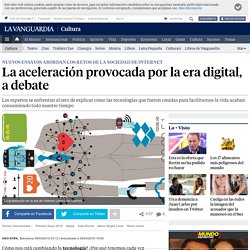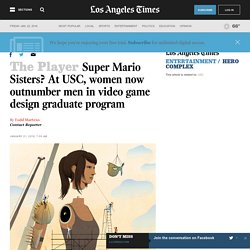

La aceleración provocada por la era digital, a debate. Cómo nos está cambiando la tecnología?

¿Por qué tenemos cada vez menos tiempo para nosotros? ¿Hay que inventarse una ética digital? Cada vez más ensayistas abordan este tipo de temas. En el polo de los apocalípticos, destaca el norteamericano Nicholas Carr –autor de Atrapados y Superficiales para quien las llamadas tecnologías de la información y la comunicación (TIC, para los amigos) nos están convirtiendo cada vez más en seres inatentos y nos hacen perder elementos clave de nuestra inteligencia. Al otro lado, el canadiense Clive Thompson –autor de Smarter than you think– opina todo lo contrario, que las TIC nos ayudan a ser más listos y desarrollan capacidades –como la memoria o la capacidad de lectura– que teníamos dormidas o estancadas.
MoocSMP. Virtual Outworlding: 2014 OPENSIM: HELP: Why Kitely for blogs and video production? Kitely vs Inworldz vs Second Life. Why Kitely for blogs and video production?

Kitely vs Inworldz vs Second LifeScroll down for News and notes- Some people have asked me why I have moved some of my activities to Kitely rather than to Inworlds. Here is my explanation: 1. I needed to move my video production activities out of Second Life because of the new terms of service there. If you want to sell exclusive rights to videos done in SL, check the TOS 2. Selection criteria: grid for video production and blog reports TOS that clearly does not claim a license to sell videos made there.Ability to backup sims to my hard drive and reinstall them as neededAccess to Hypergrid (so I could report on places in the Hypergrid).Market selling things for video production.Script compatibility with Second Life and the Hypergrid.Software compatibility with Opensim. Evaluation of 3 grids on these criteria Deal breakers marked in red TOS that clearly does not claim a license to sell videos made there.
Kitely Pass Inworldz Pass Second life Fail.
Watch the Destruction of Pompeii by Mount Vesuvius, Re-Created with Computer Animation (79 AD) A good disaster story never fails to fascinate — and, given that it actually happened, the story of Pompeii especially so.

Buried and thus frozen in time by the eruption of Mount Vesuvius in 79 AD, the ancient Roman town of 11,000 has provided an object of great historical interest ever since its rediscovery in 1599. Baths, houses, tools and other possessions (including plenty of wine bottles), frescoes, graffiti, an ampitheater, an aqueduct, the "Villa of the Mysteries": Pompeii has it all, as far as the stuff of first-century Roman life goes. The ash-preserved ruins of Pompeii, more than any other source, have provided historians with a window into just what life in that time and place was like. A Day in Pompeii, an exhibition held at the Melbourne Museum in 2009, gave its more than 330,000 visitors a chance to experience Pompeii's life even more vividly.
The exhibition included a 3D theater installation that featured the animation above. Via Metafliter Related Content: Super Mario Sisters? At USC, women now outnumber men in video game design graduate program. (Michael Kirkham / For The Times) In video games, an arena of pop-culture that's long been characterized as a boys' club, the news that women now outnumber men in the University of Southern California's graduate video game design program feels revolutionary.

And it very well may be. The women in the USC program, ranked by Princeton Review as the nation's top place to study game design, are enrolled not just because games have changed their lives. They want to change games. "There's not enough stuff that I would want to play," student Stephanie Henderson says. She's not a fan, for instance, of shooters, the gun-based games that have dominated home video game consoles. FULL COVERAGE: Video game reviews and ruminations Female characters, while still not the norm, are becoming more prevalent in top-shelf video games. (Kirk McKoy / Los Angeles Times) Industry observers are optimistic it's already happening. That's a change that shouldn't be underestimated, Edwards says. The industry is aware. Avatares, ciborgs y robots: ¿puede aumentarse la humanidad? (I) Prótesis voladora de la Sra.
Alberti. Fuente: Cortesía de la Boston Public Library, Colección Leslie Jones. La interacción entre humanos y máquinas se ha desarrollado a partir de la cuantificación de nuestro entorno y nuestros cuerpos, la reducción de nuestra realidad a datos discretos y operables matemáticamente. Este proceso ha potenciado nuestra capacidad de intervenir y rediseñar nuestro entorno. La producción de lugares de trabajo altamente eficientes, el diseño de prótesis biónicas o la creación de máquinas inteligentes son algunos de los avances hacia un aumento de nuestras capacidades físicas e intelectuales.
El desarrollo del diseño por ordenador se inició en 1962, cuando Ivan Sutherland creó el sistema Sketchpad en el MIT. Mientras Jack evolucionaba en las estaciones de trabajo de los laboratorios industriales, se produjo la revolución del ordenador personal. El ciborg ha convertido el cuerpo en un lugar para el hackeo.